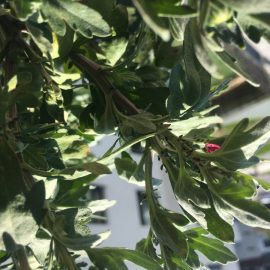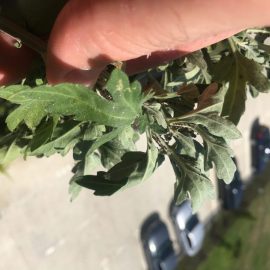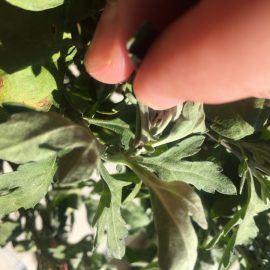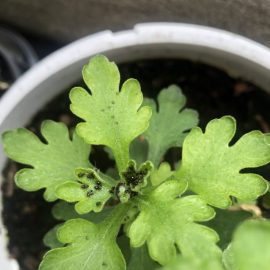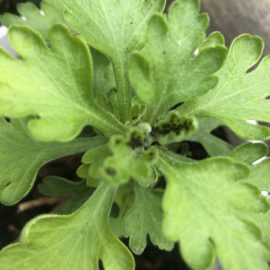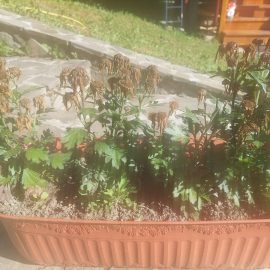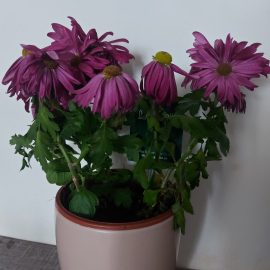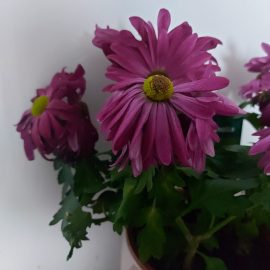Chrysanthemum, planting guide and care work
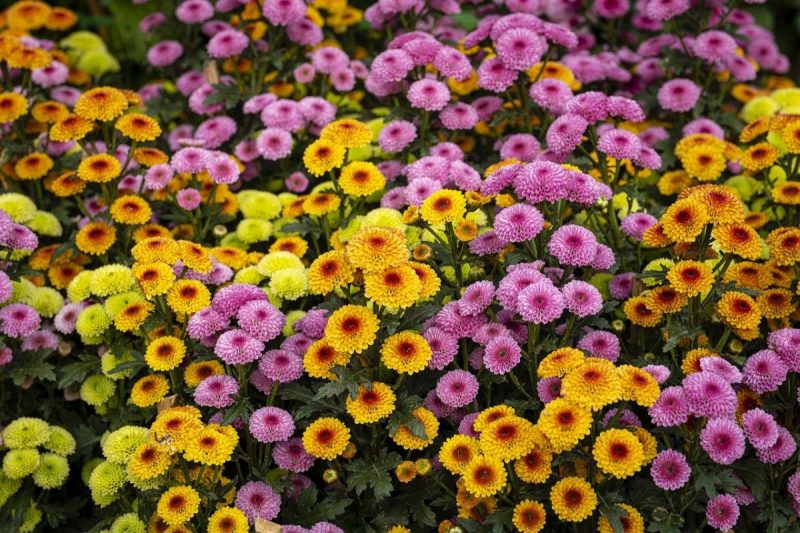
Chrysanthemum (chrysanths) is a genus of flowering plants in the Asteraceae family. They originate from Asia and Northern Europe. Also called mums or autumn daisies. The name of the genus comes from the Greek words ‘chrysos’ = gold and ‘anthemon’ = flower. Chrysanthemum is a perennial herbaceous plant, which grows in groups in the shape of a bush. Most species are annual. It has straight stems, on which the leaves are alternatively arranged. The leaves are intensely green, lobed, with a serrated edge. Chrysanthemums bloom in autumn and have flowers from September to December. The inflorescence is a simple, double, or in the form of a sphere, made up of several variously colored flowers. The fruit is achene.
Species and varieties
There are many varieties of Chrysanthemums, with inflorescences of different shapes and colors.
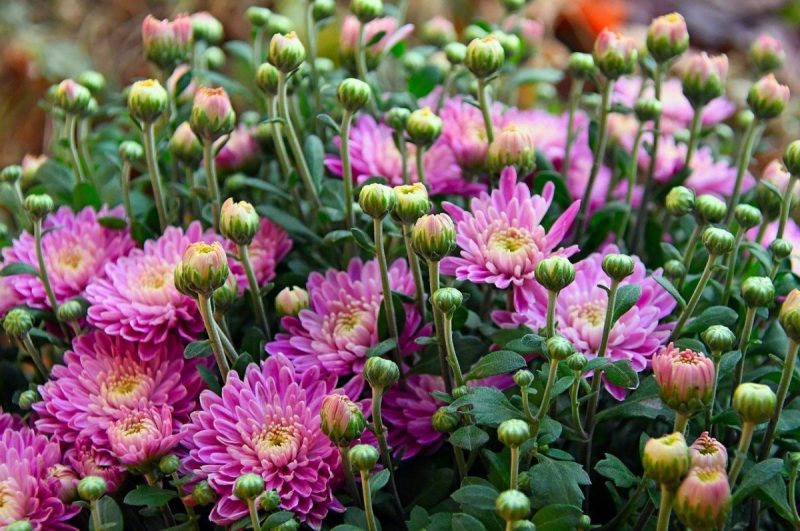
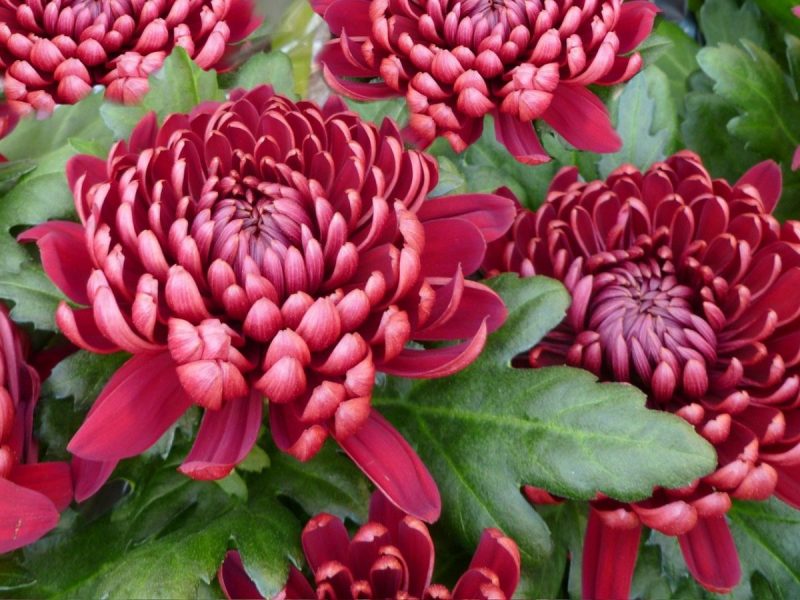
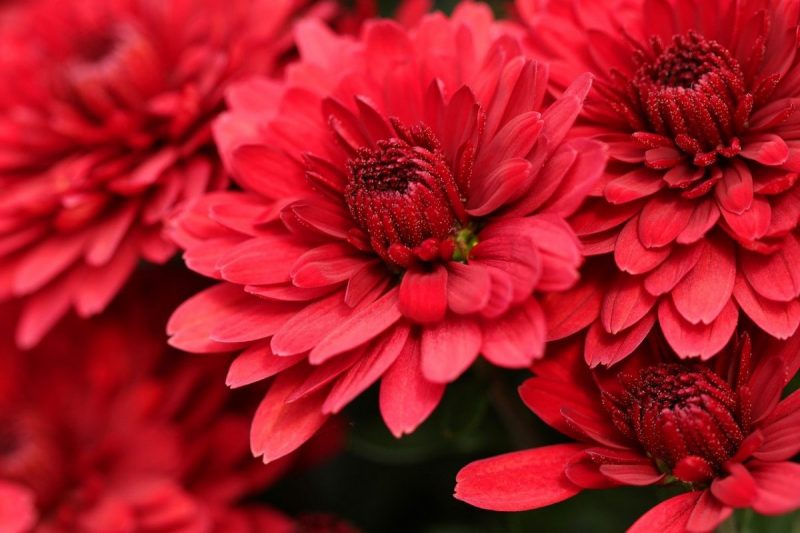
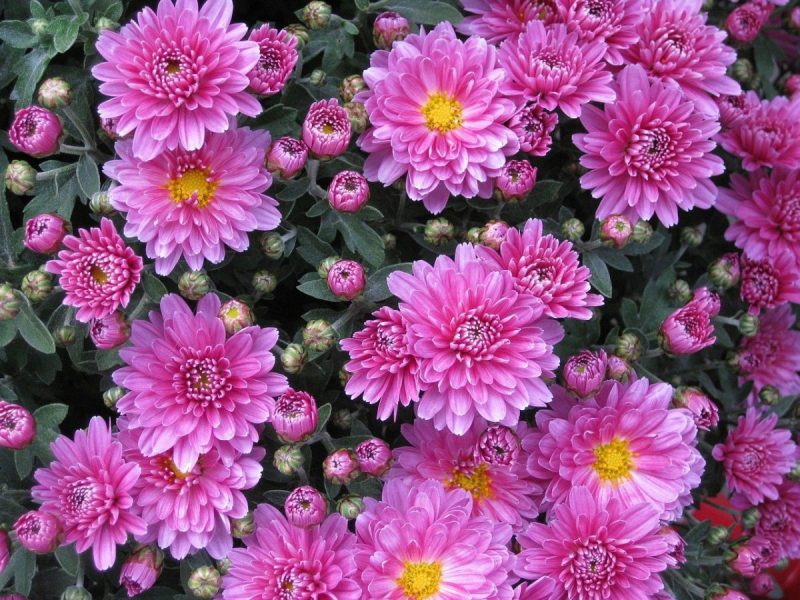
Environmental conditions
Light. Chrysanthemums need direct light to bloom, but only for a few hours a day.
Temperature. Potted Chrysanthemums grow optimally on terraces (covered or uncovered) or removed from pots and planted directly in the garden. It likes temperatures of 5-10° C.
Soil and watering. A well-drained, sandy substrate, but with rich content of organic substances, is recommended. Water moderately to keep the soil permanently moist, but not too wet.
Fertilization
It should be fertilized weekly during the flowering period, with a specific fertilizer for flowers.
Recommended products
-
You can find products on a different store
Change Store -
You can find products on a different store
Change Store -
You can find products on a different store
Change Store -
You can find products on a different store
Change Store -
You can find products on a different store
Change Store -
You can find products on a different store
Change Store -
You can find products on a different store
Change Store -
You can find products on a different store
Change Store -
You can find products on a different store
Change Store -
You can find products on a different store
Change Store -
You can find products on a different store
Change Store -
You can find products on a different store
Change Store -
You can find products on a different store
Change Store -
You can find products on a different store
Change Store -
You can find products on a different store
Change Store -
You can find products on a different store
Change Store -
You can find products on a different store
Change Store -
You can find products on a different store
Change Store -
You can find products on a different store
Change Store -
You can find products on a different store
Change Store -
You can find products on a different store
Change Store -
You can find products on a different store
Change Store -
You can find products on a different store
Change Store -
You can find products on a different store
Change Store
Pruning
In order to favor the formation of a branched and compact bush, at the end of May, the growth tips have to be pinched. After flowering, it is recommended to cut the stems (approx. 20 cm), to stimulate the rich development of the root system and to increase the resistance during the winter.
Recommended products
-
You can find products on a different store
Change Store -
You can find products on a different store
Change Store -
You can find products on a different store
Change Store -
You can find products on a different store
Change Store -
You can find products on a different store
Change Store -
You can find products on a different store
Change Store -
You can find products on a different store
Change Store -
You can find products on a different store
Change Store -
You can find products on a different store
Change Store -
You can find products on a different store
Change Store -
You can find products on a different store
Change Store -
You can find products on a different store
Change Store -
You can find products on a different store
Change Store -
You can find products on a different store
Change Store -
You can find products on a different store
Change Store -
You can find products on a different store
Change Store -
You can find products on a different store
Change Store -
You can find products on a different store
Change Store -
You can find products on a different store
Change Store -
You can find products on a different store
Change Store -
You can find products on a different store
Change Store -
You can find products on a different store
Change Store -
You can find products on a different store
Change Store -
You can find products on a different store
Change Store
Planting
Before planting, it is recommended to dig the soil to ensure that is well aerated. Chrysanthemums are usually planted in the ground, in the garden, in the middle of May, when the temperatures are not very low. It should be planted in a partially shaded place. Granular fertilizer with a high nitrogen content can be added to stimulate rich growth.
Propagation
Chrysanthemums can be propagated through seeds, cuttings, or by dividing the bush.
- the seeds of some varieties of Chrysanthemums are found on the market. They should be sown in spring, at temperatures of 15° C. Germination lasts about two weeks, and the plants will produce flowers in the same year.
- the bushes can be divided annually, in spring.
- the seedlings should be harvested in spring, from 5-8 cm long stem portions. Rooting takes place at a temperature of 10° C.
Recommended products
-
You can find products on a different store
Change Store -
You can find products on a different store
Change Store -
You can find products on a different store
Change Store -
You can find products on a different store
Change Store -
You can find products on a different store
Change Store -
You can find products on a different store
Change Store -
You can find products on a different store
Change Store -
You can find products on a different store
Change Store -
You can find products on a different store
Change Store -
You can find products on a different store
Change Store -
You can find products on a different store
Change Store -
You can find products on a different store
Change Store -
You can find products on a different store
Change Store -
You can find products on a different store
Change Store -
You can find products on a different store
Change Store -
You can find products on a different store
Change Store -
You can find products on a different store
Change Store -
You can find products on a different store
Change Store -
You can find products on a different store
Change Store -
You can find products on a different store
Change Store -
You can find products on a different store
Change Store -
You can find products on a different store
Change Store -
You can find products on a different store
Change Store -
You can find products on a different store
Change Store
Diseases and pests
Chrysanthemum is sensitive to the attack by aphids and gray mold or powdery mildew. They have to be examined periodically and you should treat them with phytosanitary products at the first signs of the appearance of pests or diseases.
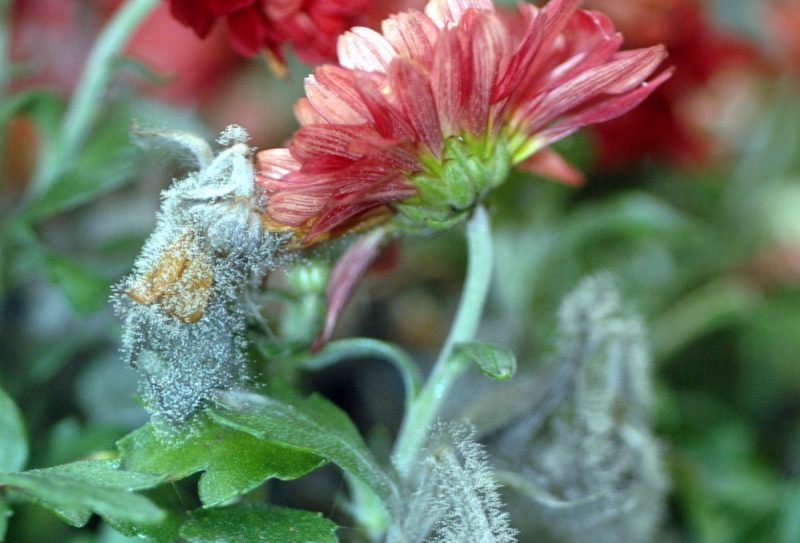
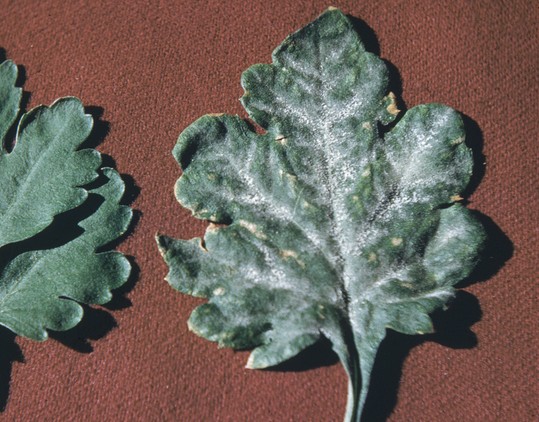
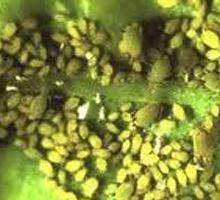
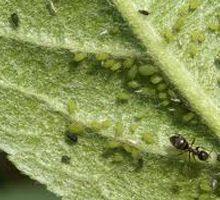
Recommended products
-
You can find products on a different store
Change Store -
You can find products on a different store
Change Store -
You can find products on a different store
Change Store -
You can find products on a different store
Change Store -
You can find products on a different store
Change Store -
You can find products on a different store
Change Store -
You can find products on a different store
Change Store -
You can find products on a different store
Change Store -
You can find products on a different store
Change Store -
You can find products on a different store
Change Store -
You can find products on a different store
Change Store -
You can find products on a different store
Change Store -
You can find products on a different store
Change Store -
You can find products on a different store
Change Store -
You can find products on a different store
Change Store -
You can find products on a different store
Change Store -
You can find products on a different store
Change Store -
You can find products on a different store
Change Store -
You can find products on a different store
Change Store -
You can find products on a different store
Change Store -
You can find products on a different store
Change Store -
You can find products on a different store
Change Store -
You can find products on a different store
Change Store -
You can find products on a different store
Change Store
In addition:
- potted Chrysanthemums should be moved indoors during the winter.
- to avoid rot in the case of potted plants, do not water excessively or allow stagnation of water in the pot’s tray.
- Chrysanthemums are even suitable for growing in the shape of bonsai.














































































































































































































































































































































































































































